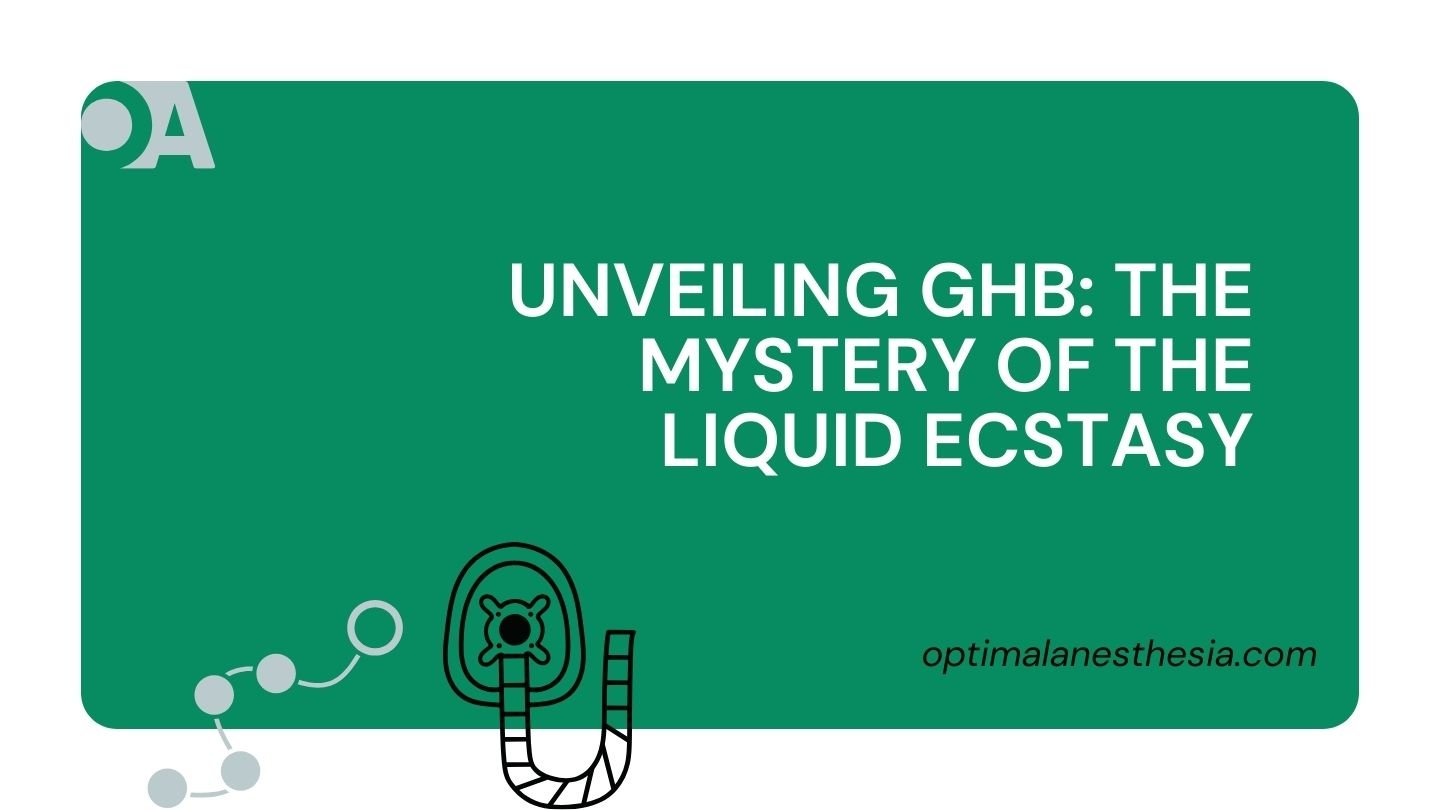Gamma hydroxybutyrate (GHB) is a central nervous system (CNS) suppressant known for its euphoric and sedative effects. This article explores the background, mechanisms of action, clinical presentation, and management of GHB use and abuse.
Background
GHB is typically taken orally in various forms, including liquid, powder, tablets, or capsules, and its effects become apparent within minutes, lasting up to 4 hours. The salty liquid form is commonly mixed with alcohol, leading to its street name “liquid ecstasy,” despite its differing effects.
Originally introduced in the 1960s as a potential treatment for alcohol withdrawal, GHB was removed from the retail market in the early 1990s. Despite promising results and FDA approval for narcolepsy treatment in 2002 (under the trade name Xyrem®), misuse for its euphoric and anabolic properties by athletes and bodybuilders has been on the rise. The abuse of substances that convert to GHB in the body, such as g-butyrolactone (GBL) and 1,4-butanediol (BD), has also become prevalent due to restrictions on legal GHB.
Mechanisms of Action
The exact mechanisms of action of GHB are not fully elucidated. It is both a precursor and metabolite of gamma-aminobutyric acid (GABA) and can bind to GABAB receptors, GHB receptors, or both, resulting in central nervous system inhibitory effects. It is suspected to have an inhibitory effect on the dopaminergic system but is not yet clearly demonstrated.
Clinical Presentation
The sedative effects of GHB typically manifest within 15 minutes of ingestion, making it attractive to users seeking rapid euphoria or, unfortunately, those with malicious intent, as it has been used as a date rape drug. Users often report a “mellow” and sociable experience. The severity of effects is generally dose-dependent and influenced by concurrent substance use.
- Low-dose GHB may lead to drowsiness, loss of consciousness, and visual disturbances.
- Higher doses can result in confusion, seizures, respiratory arrest, hypoxia, bradycardia, hypothermia, and even coma.
- When combined with other sedatives, especially alcohol, these effects are amplified, and respiratory depression becomes more likely.
Overdoses of GHB are characterized by sudden awakenings and rebound agitation, although the exact mechanism for this phenomenon remains unclear. Physical dependence on GHB can develop rapidly in aggressive users, and withdrawal symptoms, similar to alcohol withdrawal, can last from 3 to 12 days. Symptoms include tremors, insomnia, anxiety, and diaphoresis. In severe cases, withdrawal can lead to hallucinations, confusion, delirium, seizures, and possibly death.
| System | Adverse Effects |
|---|---|
| Musculoskeletal | Hypotonia |
| Cardiovascular | Hypotension, Bradycardia |
| Metabolic | Hypothermia |
| Pulmonary | Respiratory Depression, Cheyne-Stokes Respiration |
| Renal | Unknown |
| Hepatic | Likely induces P450 enzymes, unknown |
| Neurological/Psychiatric | Amnesia, Somnolence/Coma, Nausea/Vomiting, Dizziness, Confusion, Seizures, Withdrawal: Insomnia, Anxiety, Tremor, Aggression upon Sudden Awakening from Overdose |
Management of the Patient
Acutely Intoxicated Patient: The Initial Steps
- Emergency Supportive Care: The first step is to provide emergency supportive care to the acutely intoxicated patient. In some cases, immediate life-saving measures may be necessary.
- Establishment of a Definitive Airway: It’s crucial to establish a definitive airway even before the anesthesiologist encounters the patient. This proactive approach ensures the patient’s airway is secure from the outset, especially in critical situations.
Patients Known to Have Used GHB
- Management as If Intoxicated with Alcohol: Patients known to have used Gamma Hydroxybutyrate (GHB) should be managed as if they are also intoxicated with alcohol. The effects of GHB are comparable to those of alcohol, and this approach ensures their safety during anesthesia.
- Reduction in Minimum Alveolar Concentration (MAC): Due to GHB’s mechanism of action, it’s likely that the Minimum Alveolar Concentration (MAC) requirements for anesthesia are reduced. Anesthesiologists should adjust the anesthesia plan accordingly.
Patients Who Chronically Abuse GHB
- Vigilance for Withdrawal Symptoms: Patients who chronically abuse GHB may experience withdrawal symptoms during or after surgery. Anesthesiologists should remain vigilant for signs of withdrawal, such as sudden unexpected cardiovascular activation.
- Aggressive Treatment of Withdrawal Symptoms: If withdrawal symptoms are observed, an aggressive approach to treatment is necessary. Medications that increase the seizure threshold, like midazolam, should be considered for rapid prevention of acute withdrawal.
Suspected Aspiration in a Patient with Respiratory Failure and Hypoxia
- Intensive Care: When aspiration is suspected in a patient with respiratory failure and hypoxia, immediate intensive care is paramount. The patient should be closely monitored to address any respiratory complications effectively.
- Continued Mechanical Ventilation: In cases where aspiration is likely, continued mechanical ventilation postoperatively is a prudent measure to ensure the patient’s respiratory stability.
In conclusion, managing anesthesia for acutely intoxicated patients demands adaptability and a thorough understanding of the specific challenges they present. Anesthesiologists play a critical role in ensuring patient safety and well-being throughout the surgical process, even in complex scenarios involving intoxication and potential complications.


